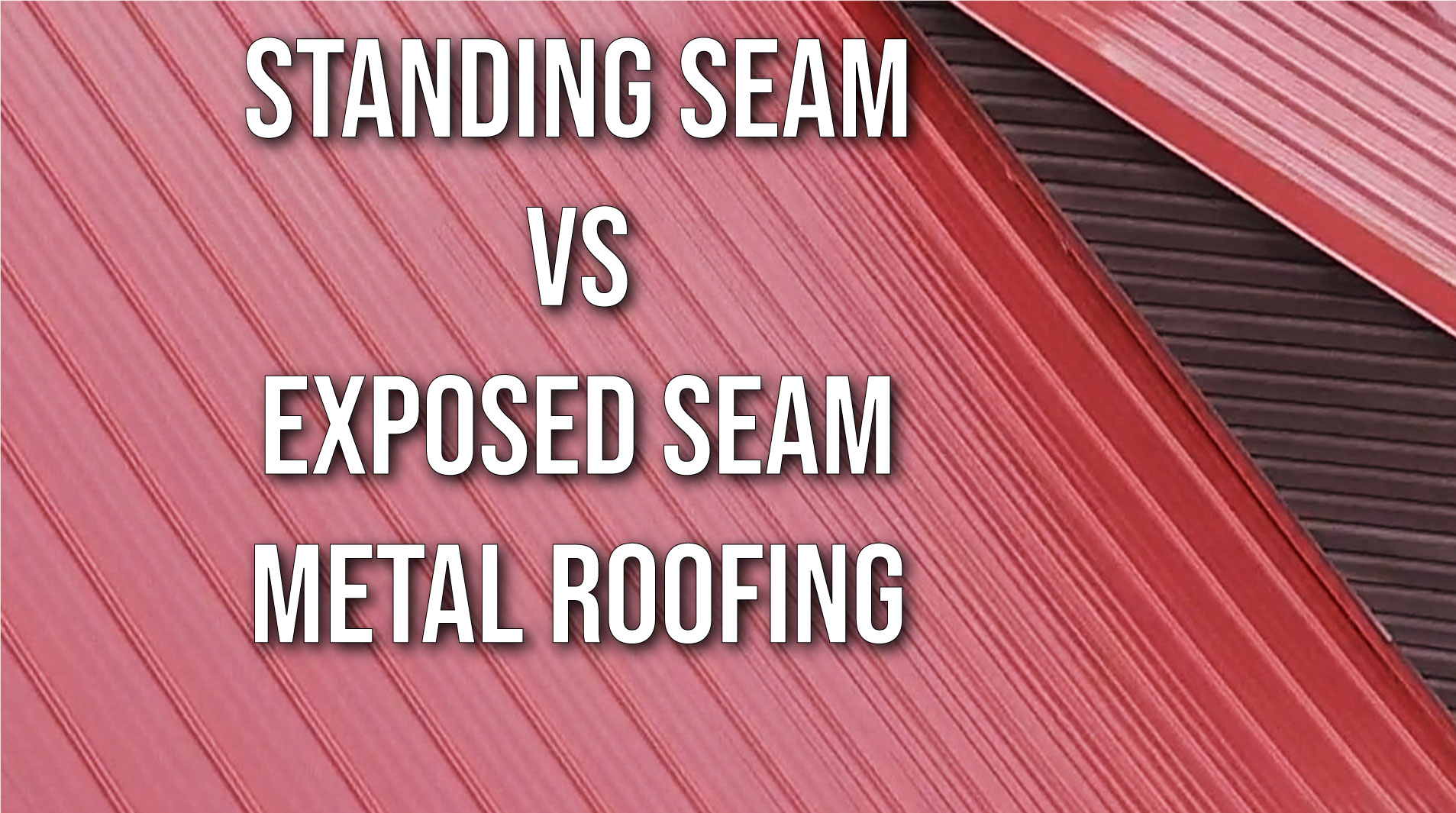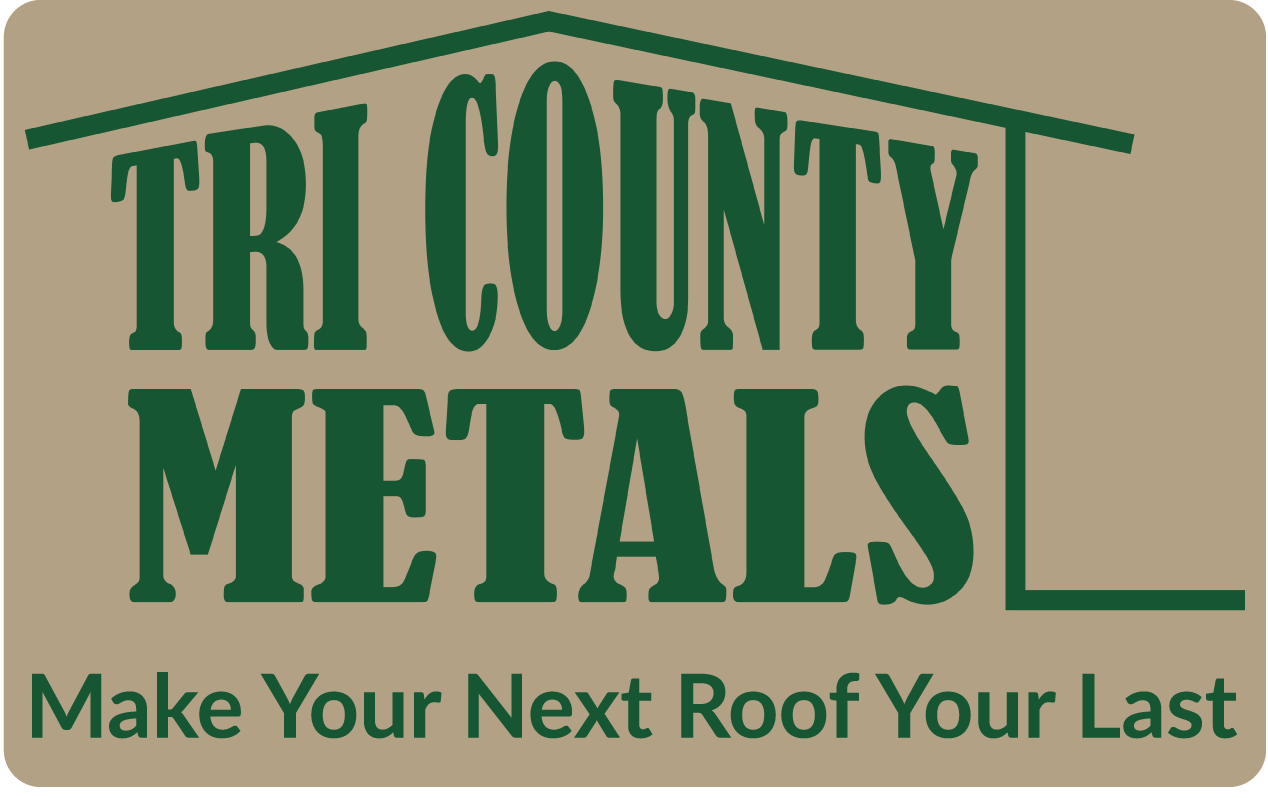
Whether you’re updating a home or looking at roofing options for a building endeavor, you will be thrilled to learn that metal roofing panels provide long-term durability, energy efficiency, and weather resistance.
Whether you’re working with a Gable roof or a Flat roof, metal roofing panels work with you. In this article, we will discuss the cost, installation, and visual appeal of the two most common types of metal roofing: standing seam and exposed seam.
Standing Seam Metal Roofing Panels
This style of metal roofing panel is known for its raised seams that connect one panel to the next. This results in a clean and polished appearance without any visible screws or fasteners.
Beyond their visual appeal, this design also allows for thermal movement of the panels, preventing leaks and any other issues.
When you invest in standing seam panels, you’re also investing in fire-resistant, weather-protective, low-maintenance, and environmentally friendly materials that will lower your cooling bills, saving you money and looking amazing while doing it.
Installation
The installation process for standing seam metal panels typically involves six steps:
Preparation: Roof decking is looked over for damage, and necessary repairs made before installation
Underlayment: Provides a barrier for moisture and improves energy efficiency
Flashing: Creates a watertight seal over any vulnerable areas of the roof
Installation of panels: Done by locking one panel into the next
Trimming: Around the perimeter of the roof, chimney, etc., to create a more finished look.
Inspection/Cleanup: Checking that all panels are installed correctly, and no water can leak in, remove any remaining scraps or debris
Because of the complexity of standing seam panel installation, we highly recommend hiring a professional to perform the installation.
Visual Appeal
The visual appeal of standing seam metal panels is perhaps one of the biggest arguments for them in favor of exposed seam. Covering up the fastening from panel to panel creates a smooth and sleek appearance and also serves the purpose of preventing leaks.
Which Standing Seam Panels Are Right For Me?
Here are three types of standing seam metal roofing panels we supply at Tri County Metals:
TCM-Lok Panels
These are great for residential and light commercial applications and are the most common, “traditional” standing seam panels. Come with an incorporated “nail strip” allowing you to fasten the panels directly onto the roof deck.
16” wide with 1” high ribs, available in three colors. Available flat, ribbed, or striated, though striated is recommended. Panels are both steel and aluminum.
SL-Lok and SS-Lok Panels
These panels are designed specifically for projects that require a panel run of more than 30 feet. SL-Lok and SS-Lok panels fit together like nuts and bolts, interlocking via a “snap-lock,” hence the panels’ name.
Available flat, ribbed, or striated, though striated is recommended.
MS-Lok
Designed for projects requiring a pronounced, higher rib. The MS stands for “mechanical seam,” as a machine is required to seal the panels’ 1.5 to 2-inch ribs. This panel is a regular choice for commercial projects.
Available flat, ribbed, or striated, though striated is recommended.
Exposed Seam Roofing Panels
This style of metal roofing panel, in contrast to the standing seam, features a visible seam where panels meet. The panels are put together with screws or nails, which are also visible on the surface of the panel.
Installation
The installation process for exposed seam panels mirrors standing seam panels in that it is the six steps we already discussed: preparation, underlayment, flashing, installation of panels, trimming, and inspection/cleanup.
The only difference is that standing seam panels are installed by locking into one another, whereas exposed seam panels are installed by inserting screws or nails into connecting panels.
As with standing seam panel installation, we highly recommend having your roofing panels installed by a professional.
Visual Appeal
In comparison to standing seam panels, exposed seam panels is no fluff. They are not sleek or aesthetically pleasing and are there to do a job more efficiently rather than look breathtaking. For this reason, exposed seam panels are used most commonly in commercial and industrial roofing rather than residential.
Which Exposed Seam Panels Are Right For Me?
Here are three types of exposed seam panels that we produce at Tri County Metals:
Ultra Rib
This type of panel is a main-stay and is used for many industrial, light commercial, and agricultural applications. Made of steel.
5V
This type of panel has a classic, Key West-style look and is one of the oldest profiles on the market. Available in steel or aluminum. It can be striated or flat, though striated is recommended.
PBR
This rugged-style panel is a quick and easy go-to for low-slop roofs of industrial or agricultural applications. Made of steel.
Is A Metal Roof Right For You?
Whether you’re finishing a new home or renovating your business, metal roofing is a worthwhile investment to keep your energy bills down and your house looking upstanding. The long-term costs of upkeep for metal roofing are far less than the initial cost of installation. So what are you waiting for? Standing seam or exposed seam roofing is waiting to lower your energy bills and make your house look sleek and new.
